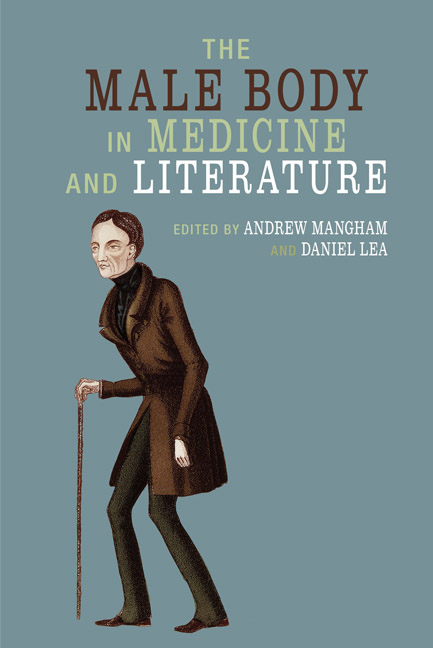Book contents
- Frontmatter
- Contents
- Acknowledgements
- Notes on Contributors
- Introduction
- Part One Enquiry and Experimentation
- 1 The Poetics of Anatomy: John Donne's Dissection of the Male Body
- 2 The Black Male Body in Early African American Science Fiction: The Experimental Case of Sutton Griggs's Imperium in Imperio
- 3 Miserrimus Dexter: Monstrous Forms of the Fin de Siècle
- 4 ‘Intellectual suicides’: The Man of Letters in Middlemarch
- Part Two Wounded and Psychopathologised Bodies
- Part Three Fear, Confusion and Contagion
- Index
3 - Miserrimus Dexter: Monstrous Forms of the Fin de Siècle
from Part One - Enquiry and Experimentation
- Frontmatter
- Contents
- Acknowledgements
- Notes on Contributors
- Introduction
- Part One Enquiry and Experimentation
- 1 The Poetics of Anatomy: John Donne's Dissection of the Male Body
- 2 The Black Male Body in Early African American Science Fiction: The Experimental Case of Sutton Griggs's Imperium in Imperio
- 3 Miserrimus Dexter: Monstrous Forms of the Fin de Siècle
- 4 ‘Intellectual suicides’: The Man of Letters in Middlemarch
- Part Two Wounded and Psychopathologised Bodies
- Part Three Fear, Confusion and Contagion
- Index
Summary
The odd thing about a specimen is that it is a kind of cipher when considered in isolation. Specimens are a lot like words: they don't mean anything unless they are in the context of a sentence or a system.
The Law and the Lady (1875) by Wilkie Collins is a detective story drawn around the character of the female sleuth. The heroine, Valeria Woodville, is one of the most resourceful woman characters in British fiction, determined to discover the truth about her husband's past. The novel also introduces the eccentric character of Miserrimus Dexter, in whom Valeria believes she has an ally in her quest to clear her husband of the Scotch verdict ‘not proven’ for the murder of his first wife, Sara. Dexter is both mentally disturbed and physically deformed, being born without legs. He navigates the world either using a wheelchair or by hopping on his hands. His mood changes violently from melancholy to explosive rage, and he is cared for in his home by his simple-minded cousin Ariel. After sending Valeria to chase a number of dead ends and teasing her with red herrings, she eventually tricks him into confessing the truth about Sara's death – that she committed suicide. After the mystery is solved, Valeria's faith in the law is restored and Dexter is confined to an asylum, accompanied by Ariel, who stays with him until his death. Published in 1875, The Law and the Lady provides a chronological and thematic bridge between the realist nineteenth-century novels and the literature of the fin de siegrave;cle. The novel continues in the Dickensian tradition of giving importance to ordinary objects while introducing a decadent character, in this case, the phocomeliac monster Miserrimus Dexter:
The bright intelligent face and the large clear blue eyes, the lustrous waving hair of a light chestnut colour, the long delicate white hands, and the magnificent throat and chest which I have elsewhere described. The deformity which degraded and destroyed the manly beauty of his head and breast was hidden from view by an Oriental robe of many colours, thrown over the chair like a coverlid.
- Type
- Chapter
- Information
- The Male Body in Medicine and Literature , pp. 48 - 63Publisher: Liverpool University PressPrint publication year: 2018



